
- Company
- Services
- UI/UX Design Services
- Microsoft Dynamics 365
- Mobile App Development
- AI Software Development
- Web App Development
- Generative AI Development
- Digital Product Development
- Enterprise Mobility
- SaaS Application Development
- Application Integration
- White-label WP Maintenance
- ERP Software Solutions
- Software Testing
- Offshore Development Center
- Let’s Connect
- Trending
- Technology
- Industry
- Build Your Team
- Our Work
- Company
- Services
- UI/UX Design Services
- Microsoft Dynamics 365
- Mobile App Development
- AI Software Development
- Web App Development
- Generative AI Development
- Digital Product Development
- Enterprise Mobility
- SaaS Application Development
- Application Integration
- White-label WP Maintenance
- ERP Software Solutions
- Software Testing
- Offshore Development Center
- Let’s Connect
- Trending
- Technology
- Industry
- Build Your Team
- Our Work
We use cookies and similar technologies that are necessary to operate the website. Additional cookies are used to perform analysis of website usage. please read our Privacy Policy
Industry 5.0 In Manufacturing: Navigating the Future of Smart Production
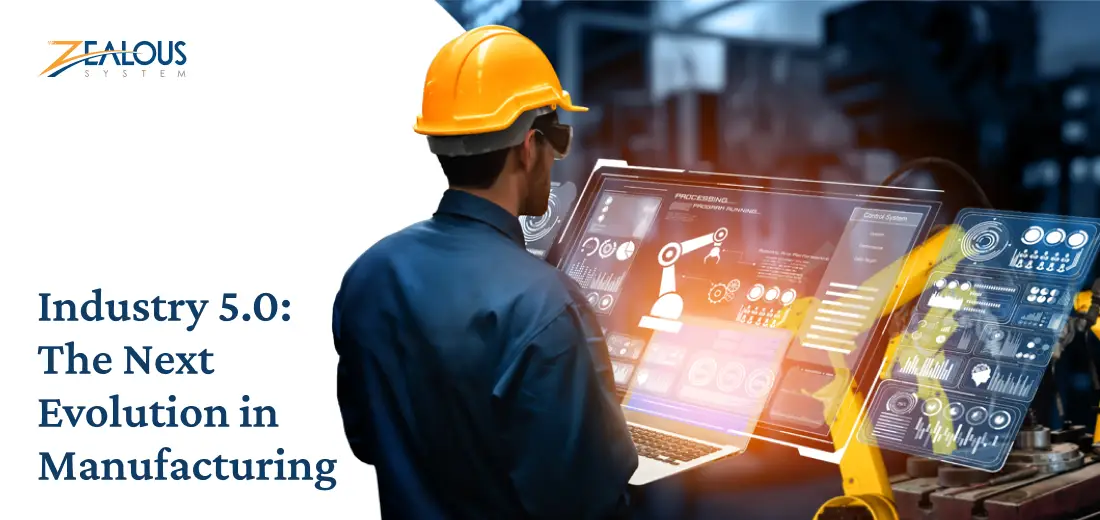
Industry 5.0 in manufacturing is a relatively new concept that is gaining a lot of attention as businesses and governments look for ways to make manufacturing more sustainable, resilient, and human-centric.
Throughout history, industries have seen significant changes. From machines taking over work in the 18th century, known as the Industrial Revolution, to today’s digital advancements in Industry 4.0, each era brought progress.
Now, we’re on the verge of a new era, Industry 5.0, which will redefine manufacturing in remarkable ways.
The European Union has been a leading advocate for Industry 5.0, and the concept has been incorporated into its industrial strategy. The EU sees Industry 5.0 as a way to create a more competitive and sustainable manufacturing sector that can help address the challenges of climate change and resource scarcity.
Industry 5.0 is the fifth industrial revolution, which is still in its early stages. But wait, before we make any impulsive decision to jump directly into 5.0, let’s understand it from its core.
In this blog, we will talk about what Industry 5.0 is, its features and principles, and the ways it has been improving the manufacturing industry with some real-world examples.
Before we begin, let’s have a sneak peek into the Industrial Revolution and society from 1.0 to 5.0.
Sneak-Peek Into Industrial Revolution 1.0 To 5.0 History
Industrial Revolution 1.0 (1760-1840)
This was the first industrial revolution, which was characterized by the introduction of new technologies such as the steam engine, the spinning jenny, and the cotton gin. These technologies led to a significant increase in productivity and output and helped to transform the way goods were produced.
Industrial Revolution 2.0 (1870-1914)
This was the second industrial revolution, which was characterized by the introduction of new technologies such as electricity, the internal combustion engine, and the assembly line. These technologies led to even greater increases in productivity and output and helped to create new industries such as automobiles and mass production.
Industrial Revolution 3.0 (1945-1970)
This was the third industrial revolution, which was characterized by the introduction of new technologies such as computers, nuclear power, and space exploration. These technologies led to a major transformation of the way we live and work, and helped to create new industries such as telecommunications and information technology.
Industrial Revolution 4.0 (1970-present)
This is the fourth industrial revolution, which is characterized by the introduction of new technologies such as the Internet of Things (IoT), artificial intelligence (AI), and robotics. These technologies are leading to a new era of automation and connectivity, and are transforming the way we produce, consume, and interact with goods and services.
Industrial Revolution 5.0 (2020-present)
This is the fifth industrial revolution, which is still in its early stages. It is characterized by the convergence of physical, digital, and biological technologies, and is leading to a new era of intelligence, sustainability, and collaboration.
This convergence is leading to the development of new technologies such as artificial intelligence, robotics, and 3D printing.
Industry 5.0 has the potential to revolutionize many industries, including manufacturing, healthcare, and transportation. Let’s understand Industry 5.0 briefly.
What Is Industry 5.0?
Industry 5.0 is the fifth stage of industrial advancement, marked by the integration of artificial intelligence, robots, and the Internet of Things. It builds upon Industry 4.0 but places a strong focus on making work more centered around humans, sustainable, and resilient.
In Industry 5.0, robots and smart machines are used to enhance what humans can do, not replace them. This leads to more efficient and safe manufacturing, creating better working conditions.
Sustainability is a key principle in Industry 5.0. Smart factories are designed to produce less waste and pollution while using resources wisely, reducing their environmental impact.
Industry 5.0 has a few main aspects:
- Human-Centric Orientation: At its core, Industry 5.0 places paramount importance on crafting workplaces that ensure the well-being, productivity, and job satisfaction of the workforce.
- Sustainability Imperative: Industry 5.0 strives to reduce the ecological footprint of manufacturing processes, emphasizing eco-friendliness.
- Resilience as a Pillar: This approach focuses on developing systems and processes that can adapt and endure unexpected challenges and disruptions.
- Synergy between Humans and Machines: Instead of replacing humans, Industry 5.0 uses robots and smart machines to enhance human capabilities, encouraging cooperation.
- Cutting-Edge Technology: Industry 5.0 adopts the latest technologies like AI, robotics, and IoT to drive its transformational goals.
Even though it’s still new, Industry 5.0 could change how things are manufactured and improve our world by combining technology with human creativity and care for the environment.
What will Industry 5.0 mean for manufacturing?
Industry 5.0 is set to bring significant changes to manufacturing, making it more efficient, sustainable, and centered around people. Here are some specific ways Industry 5.0 will impact manufacturing:
More Automation and Digitalization
Industry 5.0 will use robots, artificial intelligence, and digital technology more extensively in manufacturing. This will make production faster and allow for easier customization of products.
Better Collaboration between Humans and Machines
Industry 5.0 will encourage humans and machines to work together more effectively. Technologies like augmented reality and virtual reality will make this collaboration smoother.
Focus on Sustainability
Sustainability is a big part of Industry 5.0. It will use technologies like 3D printing to reduce waste and create energy-efficient robots.
Personalized Production
Industry 5.0 will use AI and big data to understand customer needs better, resulting in products that are more tailored to individual preferences.
Real-world examples of Industry 5.0 impact on manufacturing
In the automotive sector, robots are welding car bodies, and AI optimizes production lines. Robots are increasingly being used in the automotive sector for a variety of tasks, including welding car bodies.
Robots are able to perform these tasks with precision and consistency, which can help to improve quality and productivity. Additionally, robots can work in dangerous or hazardous environments that would be unsafe for humans.
- In the automotive sector, robots are welding car bodies, and AI optimizes production lines. Robots are increasingly being used in the automotive sector for a variety of tasks, including welding car bodies. Robots are able to perform these tasks with precision and consistency, which can help to improve quality and productivity. Additionally, robots can work in dangerous or hazardous environments that would be unsafe for humans.
- Healthcare utilizes robots for surgery and AI for disease diagnosis. Robots are being used in surgery to perform complex procedures with greater precision and accuracy than humans. For example, robots are being used to perform minimally invasive surgery, which can help to reduce pain and scarring.
- Manufacturing relies on 3D printers for custom parts and IoT sensors to monitor equipment and prevent breakdowns.
These real-world applications exemplify how Industry 5.0 is transforming various industries, with even more innovations anticipated as technology continues to advance.
Principles of Industrial Revolution 5.0
Human-Centric Approach
Industry 5.0 prioritizes the human workforce as the central element in production. Rather than replacing people, machines and automation are utilized to enhance human skills and productivity, fostering a collaborative work environment.
Sustainability Commitment
Industry 5.0 is committed to making manufacturing more sustainable by reducing energy consumption and resource usage. This is accomplished through innovative technologies like 3D printing, which minimizes waste, and the adoption of energy-efficient robotic systems.
Resilient Manufacturing
Industry 5.0 aims to build a manufacturing sector capable of withstanding disruptions, whether from natural disasters or supply chain interruptions. This resilience is achieved through technologies like cloud computing and advanced data analytics, which enhance visibility and decision-making capabilities.
Industry 5.0 Benefits for the Manufacturing Industry
Operational Efficiency
Industry 5.0 is poised to revolutionize manufacturing by introducing advanced technologies such as robotics, artificial intelligence, and digital systems.
A study by McKinsey & Company found that Industry 5.0 could lead to a 30% increase in operational efficiency in manufacturing.
These innovations will significantly elevate production efficiency, streamlining processes and facilitating greater product customization.
Human-Machine Synergy
An integral facet of Industry 5.0 lies in its capacity to foster improved collaboration between human workers and automated machinery.
This collaborative dynamic is made possible through the integration of technologies like augmented reality and virtual reality, which enhance coordination and effectiveness in manufacturing operations.
Environmental Stewardship
Industry 5.0 places a strong emphasis on sustainability. Central to this is the deployment of eco-conscious technologies, including 3D printing, which
substantially reduces material waste, and the incorporation of energy-efficient robotic systems.
These measures are expected to curtail the environmental footprint of manufacturing processes.
Tailored Product Offerings
Through the strategic application of artificial intelligence and robust data analysis, Industry 5.0 empowers manufacturers to gain deeper insights into customer preferences.
This insight allows for the creation of personalized products, aligning production more closely with consumer demands.
Informed Decision-Making
Industry 5.0 leverages cutting-edge technologies, such as artificial intelligence and extensive data analytics, to enhance decision-making processes within manufacturing.
These tools enable manufacturers to make well-informed choices concerning production volumes, inventory management, and marketing strategies.
Cost Rationalization
By automating repetitive tasks, optimizing operational procedures, and minimizing waste, Industry 5.0 has the potential to significantly reduce manufacturing costs.
Stimulation of Innovation: Industry 5.0 equips manufacturers with state-of-the-art tools and technologies, fostering an environment conducive to innovation in product design and manufacturing methodologies.
Advanced Manufacturing Technologies for Industry 5.0
1. Artificial Intelligence (AI)
- AI algorithms, part of the cutting-edge artificial intelligence solutions, analyze data from sensors and machines to predict when equipment might fail, enabling timely maintenance and reducing downtime.
- Quality control benefits from AI’s ability to quickly identify defects and anomalies in real-time, ensuring products meet high standards.
- Process optimization involves using AI to fine-tune production processes, leading to increased efficiency and resource savings.
- AI-driven robots and cobots (collaborative robots) assist workers in tasks requiring precision and repetition.
2. Internet of Things (IoT)
- IoT devices, such as sensors and connected machines, continuously gather data from various points in the manufacturing process.
- This data can be used for real-time monitoring of equipment performance, helping prevent breakdowns and reduce maintenance costs.
- IoT application development enables remote monitoring and control of manufacturing processes, enhancing flexibility and responsiveness. Industry 5.0 In Manufacturing: Unveiling a New Era of Innovation.
- Product traceability is improved by tracking components and products throughout the production chain, aiding in quality control and recalls.
3. Robotics
- Robots are employed in manufacturing for a wide range of tasks, from automated welding and assembly to intricate painting and packaging.
- They enhance efficiency by working consistently and without fatigue, ultimately increasing productivity.
- Collaborative robots work alongside humans, contributing to worker safety and efficiency.
4. 3D Printing
- 3D printing, also known as additive manufacturing, builds objects layer by layer from digital designs.
- It is ideal for producing prototypes and customized products with complex geometries.
- Manufacturers can create spare parts on demand, reducing inventory costs and minimizing downtime.
Example: Adidas uses 3D printing to create customized shoes. This has helped the company to meet the needs of individual customers.
5. Augmented Reality (AR) and Virtual Reality (VR)
- AR overlays digital information in the real world, aiding workers in tasks like assembly and maintenance by providing visual instructions.
- VR creates immersive simulations for training purposes, allowing workers to practice tasks in a safe virtual environment.
- Product design benefits from VR by enabling engineers to visualize and test prototypes before physical production.
6. Blockchain
- Blockchain technology creates secure and transparent ledgers for tracking and verifying the provenance of products.
- It enhances supply chain transparency by providing a tamper-proof record of product movement.
- Counterfeit prevention is strengthened as consumers can verify the authenticity of products through blockchain-enabled QR codes or NFC tags, showcasing the pivotal role of blockchain app development in ensuring transparency and security in manufacturing processes.
7. Edge Computing
- This technology can be applied to data-intensive processes like quality control, where rapid decisions are crucial.
- Explore how the fusion of Industry 5.0 and quantum app development is reshaping the landscape, bringing unprecedented efficiency and capabilities to modern production processes.
8. Cybersecurity
- Robust cybersecurity measures are essential to protect manufacturing systems from cyberattacks, which can disrupt operations and compromise sensitive data.
- Security protocols, network monitoring, and regular updates help safeguard manufacturing facilities from evolving cyber threats.
- These advanced manufacturing technologies collectively drive the Industry 5.0 revolution, enhancing efficiency, productivity, and sustainability across various sectors of manufacturing.
Conclusion
The key to Industry 5.0 is the collaboration of humans and machines. Industry 5.0 will boost productivity in manufacturing by recognizing the strengths of each party and assisting them in collaborating.
Businesses need to embrace these changes as we enter this exciting new era and invest in the technologies that will enable Industry 5.0, which will influence how we manufacture for years to come.
Let Zealous, your Industry 5.0 partner, enhance human-machine collaboration with tailored software solutions. Maximize productivity, quality, and innovation with Zealous.
We are here
Our team is always eager to know what you are looking for. Drop them a Hi!
Pranjal Mehta
Pranjal Mehta is the Managing Director of Zealous System, a leading software solutions provider. Having 10+ years of experience and clientele across the globe, he is always curious to stay ahead in the market by inculcating latest technologies and trends in Zealous.
Table of Contents
×

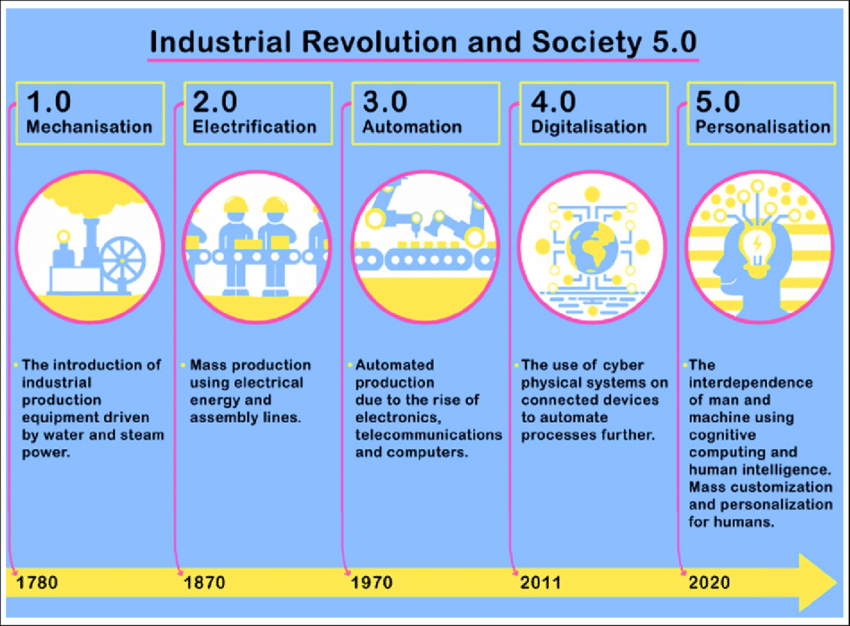
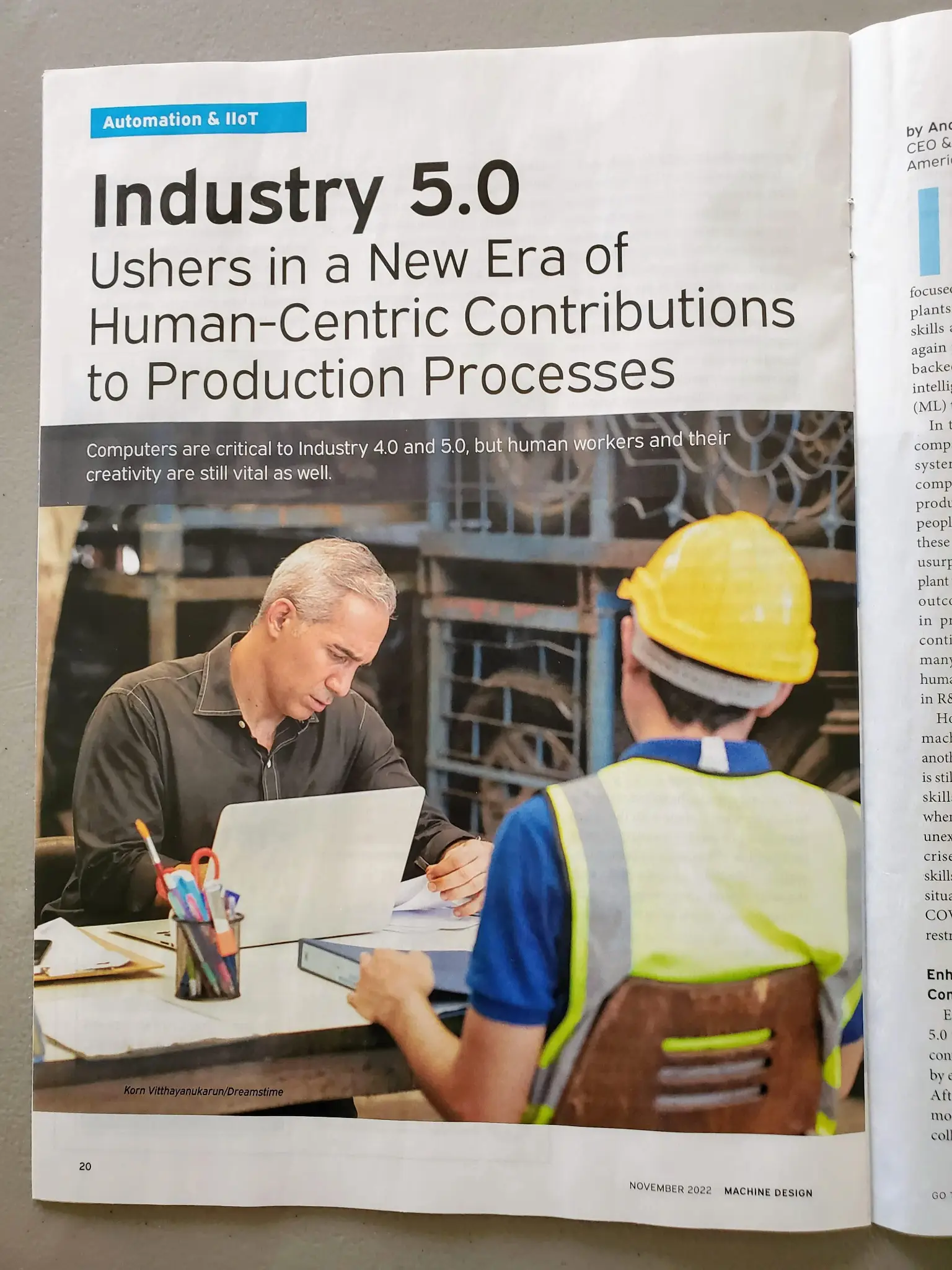
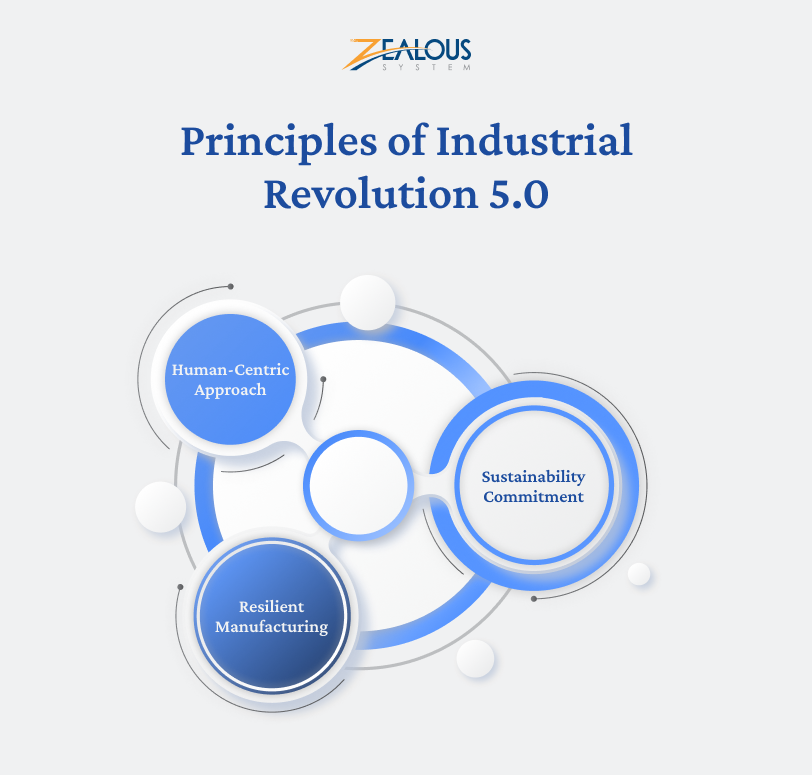
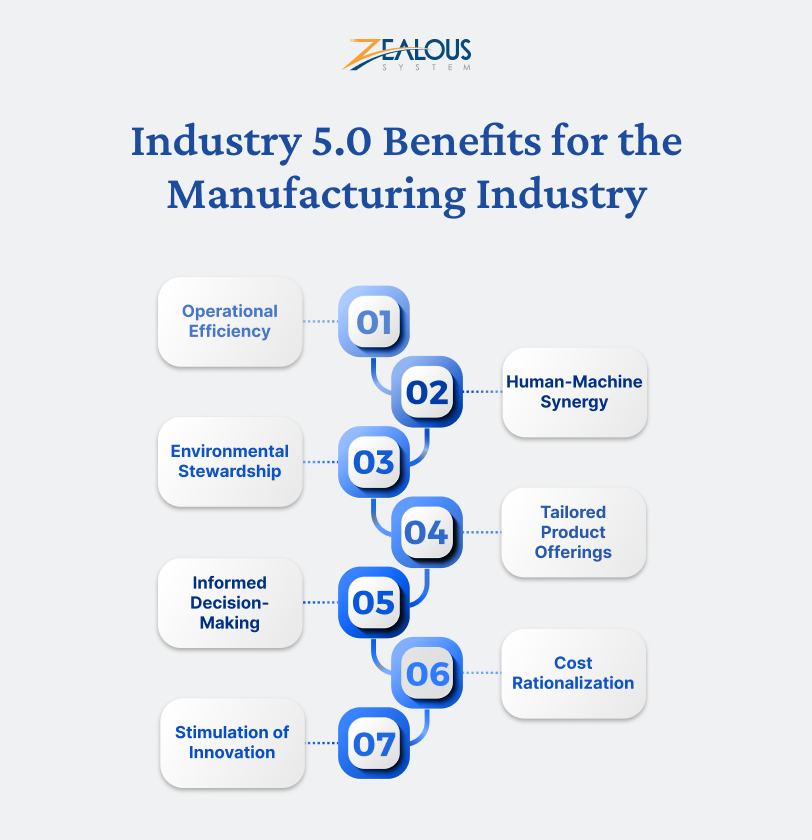
Comments